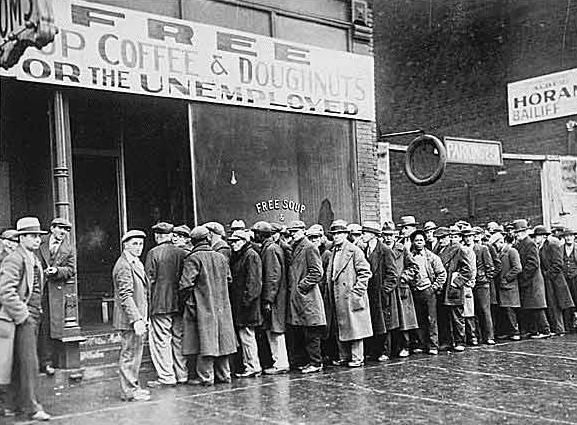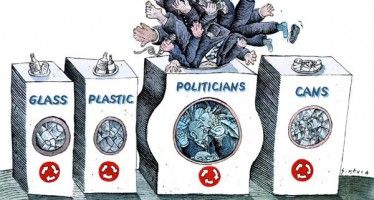Families, Not Relief, Still Safety Net
By WAYNE LUSVARDI
With implications for California budget discussions, a new study shows that unemployment benefits delay the time the jobless find work. The study comes out at a time when California’s unemployment rate of 12.4 percent remains the second highest in the nation, after Nevada’s 14.2 percent.
“Life Cycle Shocks and Income” comes from the Federal Reserve Board of San Francisco. According to a summary in the Wall Street Journal, the study concludes that Unemployment Insurance Benefits (UIB) mainly “provide incentives for prospective workers to keep looking for better jobs rather than accept less attractive positions.” This finding has implications for California Unemployment Insurance policies.
The key finding of the study is that the unemployed don’t depend on government to offset economic losses, although the disabled depend on government in the short term. Six years after losing a job, becoming disabled or getting divorced, any individual loss of income is offset by increased family income, as shown in the table below excerpted from the study.
| Table 1 – Life-Cycle Shock Effects on Income Levels (Mean average value in dollars) |
|||
| 6 Years Prior | Event | 6 Years After | |
| JOB DISPLACEMENT | |||
| + Own Labor | $42,325 | $35,679 | $30,966 |
| + Total Family | $78,104 | $68,886 | $76,059 |
| DISABILITY | |||
| + Own Labor | $31,526 | $30,069 | $29,178 |
| + Total Family | $63,497 | $72,919 | $73,860 |
| DIVORCE | |||
| + Own Labor | $39,119 | $42,465 | $43,749 |
| + Total Family | $76,772 | $61,682 | $77,393 |
| Source: San Francisco Federal Reserve – “Life Cycle Shocks and Income”
http://www.frbsf.org/publications/economics/letter/2011/el2011-08.html |
|||
Six years before an economic “shock,” such as losing a job or a divorce, there was little difference between individual incomes.
On the other hand, those who ended up disabled had lower individual and family incomes six years prior. That confirmed research that work-restricting disabilities are more associated with those of a lower socioeconomic level.
In the year of job loss, divorce or disability, however, earnings fell as expected, only more so for families than individuals. In the case of those disabled, family income actually was higher in the year of the event than six years later. Those divorced suffered higher individual but lower family income in the year of the divorce.
Six Years After a Shock
But six years later, individual and family fortunes change. For those who lost a job, total family income recovers but not fully in six years, thus offsetting lower individual income. The disabled experience higher family income, also offsetting lost individual income. But the divorced show significantly higher individual and family incomes. (This could lead to a lot of jokes on “positive” divorce.)
The San Francisco Federal Reserve study indicates that average loss individual income for the unemployed is $9,800 per year, which is offset by UIB in the short term. In the longer term, other family member incomes (a/k/a “added worker effect”) cushion the loss by about $11,000, starting from the year of loss. Current California UIB benefits extend to 99 weeks, or nearly two years. Average UIB benefits are $840 per month.
As the study puts it:
However, on average, most post-shock family income comes from earnings of family members. If a life-cycle shock causes the principal earner to lose income, other family members take up all or most of the slack by increasing their own earnings. The data suggest that Americans depend mostly on their own families for the resources necessary to weather unexpected economic events.
Waiting for the Right Job
The most controversial part of the Federal Reserve study is that the unemployed mainly use UIB Benefits to continue looking for a good job rather than taking a less satisfactory or less compensating job. UIB preserves social status, not merely income. In other words, UIB is as much a political subsidy as a lifeline, just as mortgage deductions are considered “welfare” subsidies.
Families, not welfare transfer payments, serve as a buffer against long-term individual losses. There still is a viable “third sector” in society between individuals and large corporations and bureaucracies that continues to function as an economic unit, although it is largely invisible to liberal politicians, the media and the University of California Institute for Labor and Employment.
The Legislative Analyst’s Office reports that California’s Unemployment Insurance Fund will run a $20 billion accrued deficit through 2011, or about 23 percent of the entire State General Fund Budget. California has been plugging this deficit with Federal Stimulus funds. But by September 2011, it must starting paying $500 million annual interest, in addition to repaying the $20 billion Federal loan principal.
Employers pay for Unemployment Insurance Benefits (UIB), but legislators have been reluctant to impose higher UIB rates on employers due to the weakness of the economy.
Policy makers need to understand the implications of the Federal Reserve Board study before extending the Unemployment Benefit period further, providing any more generous benefits, or putting the state into further debt.
Related Articles
Fuentes: GOP Must Remove Arnold Tumor
JUNE 15, 2011 By BRIAN CALLE In Arnold Schwarzenegger’s 1990 comedy, “Kindergarten Cop,” the most repeated line came as Arnold’s
Do Californians want to raise oil taxes?
Are Californians ready for another tax increase? That’s what California hedge-fund manager Tom Steyer sought to find out in his “People’s
Referendum threat ties CA bag ban in knots
California’s tug-of-war over the legality of single-use plastic bags will get another twist in 2015. Thanks to a determined signature collection campaign





